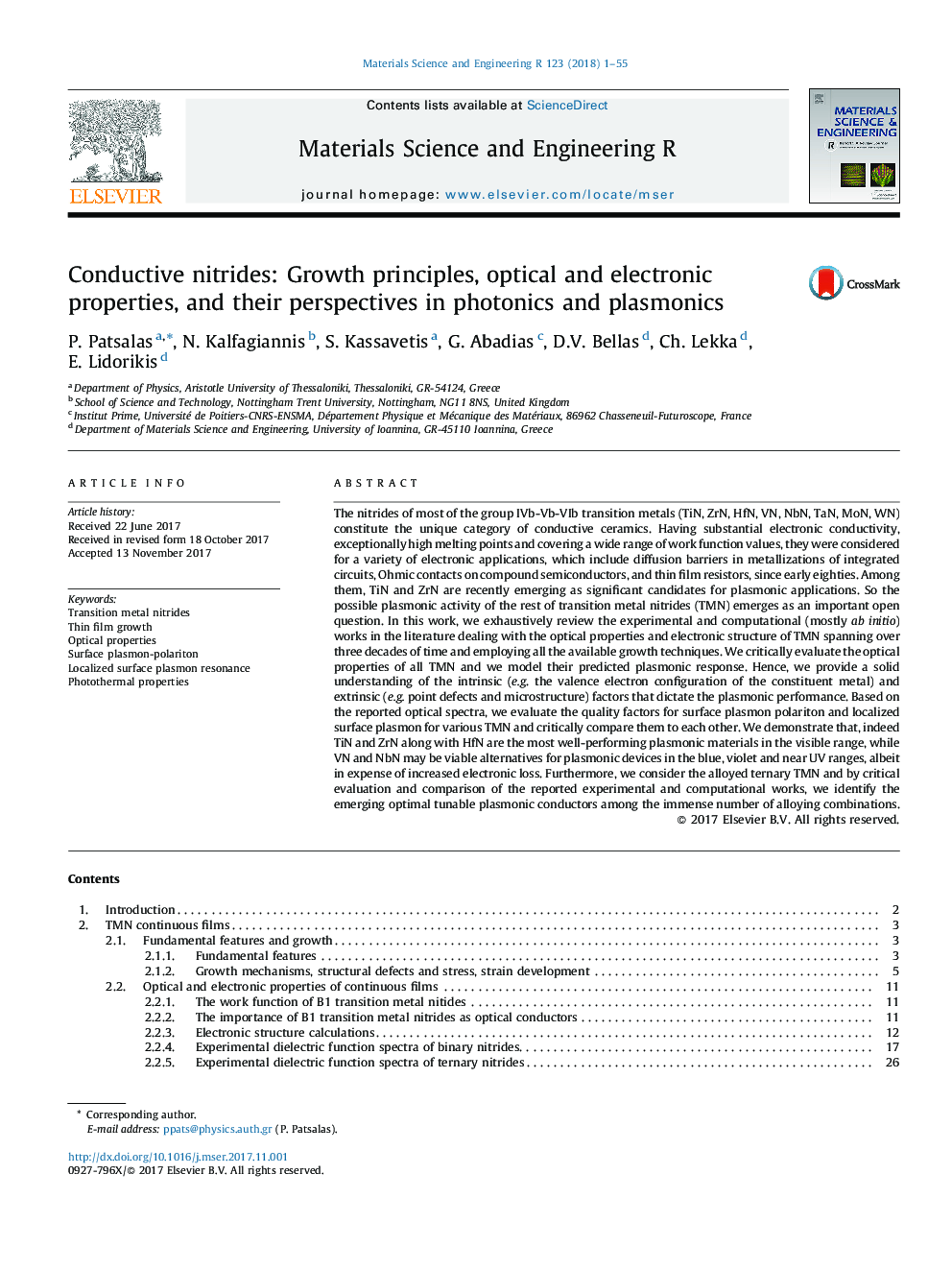| کد مقاله | کد نشریه | سال انتشار | مقاله انگلیسی | نسخه تمام متن |
|---|---|---|---|---|
| 7924400 | 1512102 | 2018 | 55 صفحه PDF | دانلود رایگان |
عنوان انگلیسی مقاله ISI
Conductive nitrides: Growth principles, optical and electronic properties, and their perspectives in photonics and plasmonics
ترجمه فارسی عنوان
نیتریت های هدایت شده: اصول رشد، خواص نوری و الکترونیکی و دیدگاه های آنها در فوتونیک و پلاسمونیک
دانلود مقاله + سفارش ترجمه
دانلود مقاله ISI انگلیسی
رایگان برای ایرانیان
کلمات کلیدی
نیتریت های فلز گذرا، رشد فیلم نازک، خواص نوری، سطح پلاسمون پلیریکون، رزونانس پلاسمون سطح محلی، خواص فتوترمال،
موضوعات مرتبط
مهندسی و علوم پایه
مهندسی مواد
مواد الکترونیکی، نوری و مغناطیسی
چکیده انگلیسی
The nitrides of most of the group IVb-Vb-VIb transition metals (TiN, ZrN, HfN, VN, NbN, TaN, MoN, WN) constitute the unique category of conductive ceramics. Having substantial electronic conductivity, exceptionally high melting points and covering a wide range of work function values, they were considered for a variety of electronic applications, which include diffusion barriers in metallizations of integrated circuits, Ohmic contacts on compound semiconductors, and thin film resistors, since early eighties. Among them, TiN and ZrN are recently emerging as significant candidates for plasmonic applications. So the possible plasmonic activity of the rest of transition metal nitrides (TMN) emerges as an important open question. In this work, we exhaustively review the experimental and computational (mostly ab initio) works in the literature dealing with the optical properties and electronic structure of TMN spanning over three decades of time and employing all the available growth techniques. We critically evaluate the optical properties of all TMN and we model their predicted plasmonic response. Hence, we provide a solid understanding of the intrinsic (e.g. the valence electron configuration of the constituent metal) and extrinsic (e.g. point defects and microstructure) factors that dictate the plasmonic performance. Based on the reported optical spectra, we evaluate the quality factors for surface plasmon polariton and localized surface plasmon for various TMN and critically compare them to each other. We demonstrate that, indeed TiN and ZrN along with HfN are the most well-performing plasmonic materials in the visible range, while VN and NbN may be viable alternatives for plasmonic devices in the blue, violet and near UV ranges, albeit in expense of increased electronic loss. Furthermore, we consider the alloyed ternary TMN and by critical evaluation and comparison of the reported experimental and computational works, we identify the emerging optimal tunable plasmonic conductors among the immense number of alloying combinations.
ناشر
Database: Elsevier - ScienceDirect (ساینس دایرکت)
Journal: Materials Science and Engineering: R: Reports - Volume 123, January 2018, Pages 1-55
Journal: Materials Science and Engineering: R: Reports - Volume 123, January 2018, Pages 1-55
نویسندگان
P. Patsalas, N. Kalfagiannis, S. Kassavetis, G. Abadias, D.V. Bellas, Ch. Lekka, E. Lidorikis,
